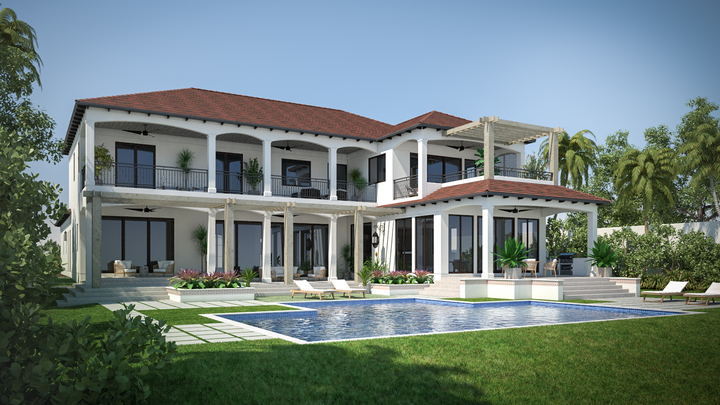Practical Considerations for Building a Beachfront Home
Living in a beachfront property is, for many people, the ultimate dream: evenings spent walking the shores, the sounds of crashing waves through open windows, uninterrupted balcony views of one of nature’s most beautiful offerings. Being able to build your own luxury beachfront property provides you with the additional benefits of being able to hand-pick the best location and save money in the long-term.
When getting started with plans for building a beachfront home, consider these 5 things to make sure you can enjoy your home long into the future:
-
Outdoor space
Most people don’t plan to build a beachfront home with the idea of spending all their time indoors with the curtains closed. If you want to make the most out of your location, find a plot of land with enough space to give you plenty of opportunity to enjoy the outdoors. Whether a large, private balcony is enough for you, or you’d prefer a sprawling front drive or back yard, keep outdoor space in mind in the initial planning stages for your build.
-
Construction materials
Building near to the water means being aware of the effects of local elements on your construction materials. Saltwater can infiltrate into certain building materials and can lead to rust, dampness and mold. Wood is a popular material for beachfront properties, but dried salt crystals form in timber cells and push the fibres apart, which can eventually destroy wooden areas of a structure. Consider your materials carefully and ensure they’re saltwater-friendly before getting started with any major planning.
-
Maintenance
Weather and sea air can cause minor damage over the years to beachfront properties. Keep in mind that you’ll need to repaint areas and clean glass windows and partitions more regularly than you would in a more inland location. Outdoor equipment like grills and furnishings will also need more regular attention to extend their lives. Indoors, sand and salt can be rough on flooring and upholstery. You’ll need to keep your home’s interior salt and sand-free to ensure it stays in good shape for as long as possible.
-
Location
It can be easy to settle on the first beachfront location you’re presented with simply for the fact that it meets your biggest requirement: it’s on the beach. But it’s important to look more closely at the specific details of your beachfront site which may have a big impact on your comfort and safety in the long run. Ensure that you’re building on secure land with little erosion threat. Check earth quality – loose earth may cause foundation issues. It’s worth also checking out an area’s local amenities and your prospective neighbours.
-
Weather
The nature of beachfront areas is that they’re more exposed to the elements, which means they often experience more dramatic weather highs and lows than inland areas. Note that some beachfront locations are more prone to tropical weather and hurricanes. You can still build in these areas, but look for protected locations such as sheltered bays. Avoid low-lying land if an area is prone to flooding.
Interested in learning more about building a luxury home in Delray Beach? See some of our breath-taking past projects here as well as those for sale and in construction currently.


